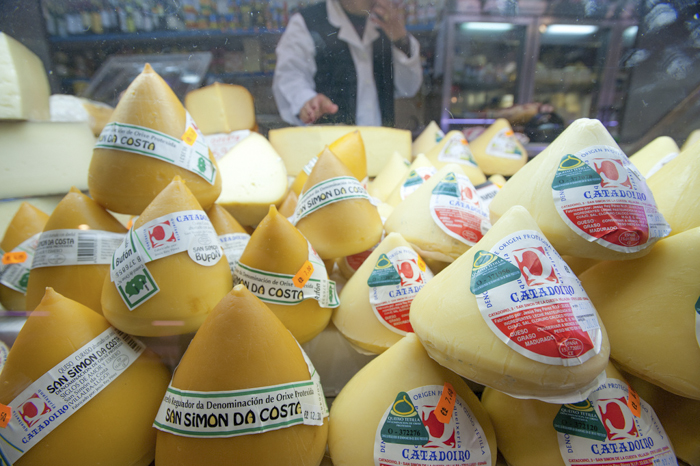Tetilla Info
Making Tetilla Cheese
This recipe is for a cheese 'in the Style of' a cheese from the northwest corner of Spain where the mountains meet the sea, Galacia.
Surprisingly, cows milk cheese in Spain is not very common due to either the rough mountains or dry plateaus making up much of Spain's topography. The Tetilla cheese stood out due to its freshness and unique traditional shape of a flattened tear drop (not at all what the name means though).
This is a wonderful high to medium moisture cheese with a buttery sweet flavor.
Of course I had to add by own finish to it with a Smoked Paprika and Oil rub.
Traveling to Visit Spanich Cheese
This past year I spent most of May in Spain for my research on the traditional cheeses of Spain, inspired by the master of all Spanish cheese Enric Canut from Barcelona Spain. I had met Enric several years ago during one of his VIAC sessions in Vermont and he pointed out the diversity of Spanish cheese that had been held back (except for large productions like Manchego) by the Franco government in Spain for so many years and for the most part completely unknown to cheese lovers outside of the country.
My initial focus was the 'Spanish National Cheese Festival' in Trujillo which is about 2 hours west of Madrid. While many of the cheeses were of a regional nature, there were many representations from throughout Spain and one that first caught my attention was the booth representing cheese from Galacia and surprisingly from cows milk (considering the dominance of goat and ewes milk cheese). These were the cheeses 'Tetilla' and 'San Simeon', both of similar tear drop shapes. and the ones I am targeting this recipe.
The History of Titilla Cheese
Many cheese lovers may not be aware of the incredible diversity of cheese in Spain. When asked about Spanish cheese, the conversation usually ends at Manchego (sheep).The graphic at right shows some of this diversity
In Spain I found very few herds of cows. They seem mostly to be on the islands off the coast and in the wet pastures of Galacia in the north west. I have no idea where all of the milk comes from in the markets but Spain is primarily goat and sheep for cheese making.
The smaller herds of sheep/goat really go back to the time the North African Moors held control in Spain and for a good part, their presence as far north as the Loire river in central France. They brought their herds into Spain soon after they settled there and as of today the animals are still there. The goat and sheep were particularly efficient at grazing in the arid lowlands as well as the rugged mountains of Spain.
Galacia sits at the top of Spain in the north western corner where the mountains meet the sea. So, as expected, it is very lush with green pastures and hence perfect for the larger bovines. So it makes sense that one their most famous cheeses are from cows milk.
The cheese are unique in shape resembling a slightly deformed upside down cone and in the case of the 'Tetilla' with its flatter squished down profile, a small breast, hence the name.
Traditionally these cheeses were drained in cloth bags that took on the tear drop shape as seen in the photo below right. Then due to their soft nature they flattened out and slumped into their shape, especially the Tetilla which was a bit higher moisture. In some cases these took on the shape of a flatish dome with very little shape. The moister they were though, the fresher they needed to be consumed.
The traditional cheese were simply drained in cloth bags but quickly lost their shape for a more fun and organic shape. The cloth bags are what originally gave the cheese its shape as you can see in the tear drops shaped draining cheese.
Variations of Titilla Cheese
These cheese are typically made with a full fat milk from the region. They are quite soft and higher in moisture with a very fresh buttery flavor. The acid is also kept slightly lower with a long slow ferment. The final making has a substantial amount of whey removed and a cold water wash brings the temperature down even further while hydrating the curds. In the end the lower acidity allows the quality of the fresh milk to shine through for flavor. Sweet and buttery with a very supple character.
- 'Tetilla' tends to be a softer cheese and loses its shape as it sits. It is commercially finished off with a wax but traditionally served quite fresh and had a final hot water dip to toughen up its outside rind after coming out of the press (no wax) making them easier to keep mold free.
- The 'San Simeon' seemed to be firmer in general, holding their tear drop shape more. They are often smoked as well, leaving an oily smooth rind that keeps molds at bay


































